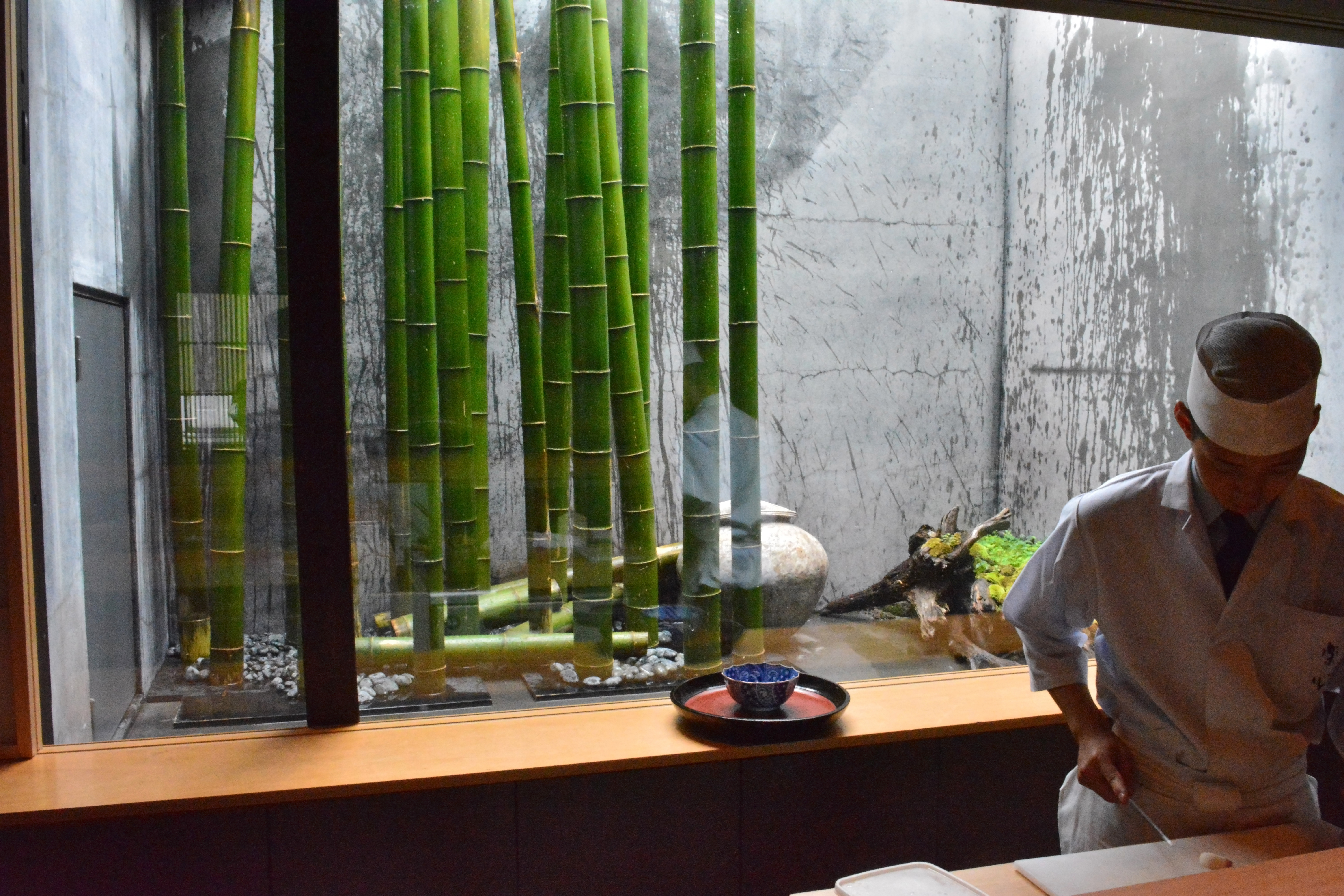What does austerity look and feel like? Well, it depends on whom you ask. I imagine for Greeks it’s a sort of endless despair engendering cynicism, but here in Japan, austerity — or, rather, restraint — can engender a sense of luxury, subtlety and even sensuality. Austerity has a long and rich history here, and many Japanese have an innate feeling for expressing it. Shintaro Katayama, the chef at Rakushin, who runs the restaurant with his sommelier wife, are masters of restraint and surprise.
On a recent lunch visit, there were two sensuous surprises that arrived either side of the meal. The first was a visual treat in the form of a hidden window display, and the latter was a savory one, Katayama’s spectacularly subtle multicourse kaiseki-ryo¯ri meal.
Rakushin is housed in what was once a tailor’s workshop, retrofitted as a machiya (a traditional wooden townhouse) in a back alley of Fukushima, a must-visit food neighborhood in Osaka. Inside, the restaurant is deliberately foreboding, it has the emptiness of a prison cell awaiting an occupant. But not long after I sat down at the counter and ordered a drink (the food menu is fixed), one of the younger chefs pulled back the shoji (wooden screen) behind the counter revealing a massive pane of glass and a window display that wouldn’t have been out of place at a high-end department store, or even a museum. The display changes seasonally: while I was there, deep green bamboo stalks reached skyward, and a moss garden in a corner collected rain and sunshine.

















With your current subscription plan you can comment on stories. However, before writing your first comment, please create a display name in the Profile section of your subscriber account page.